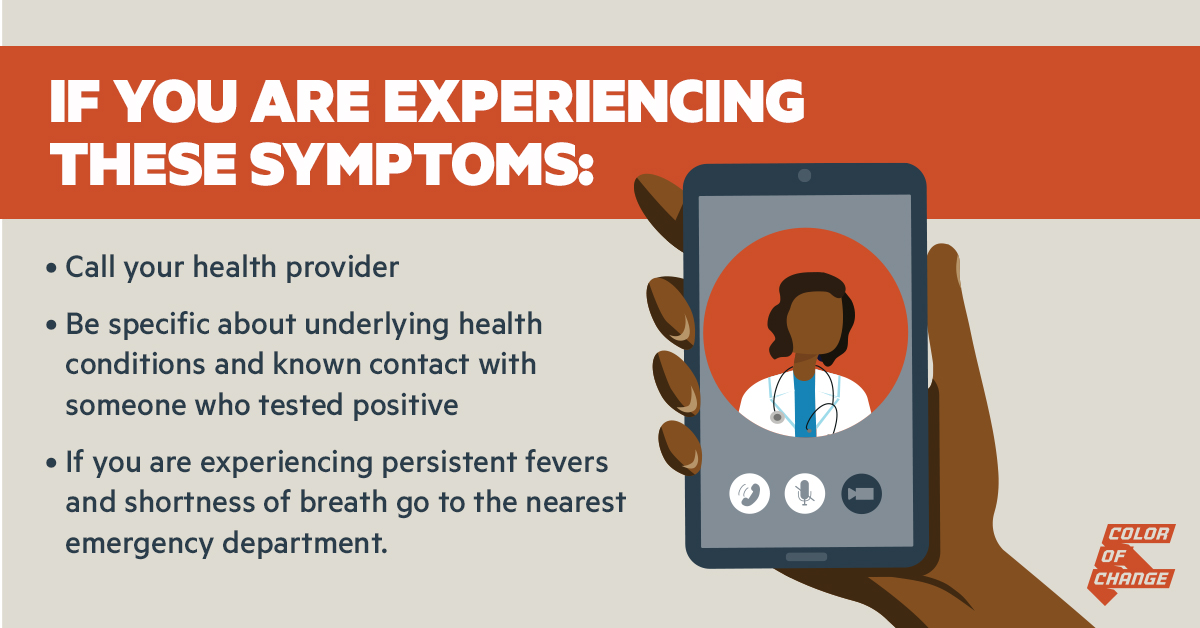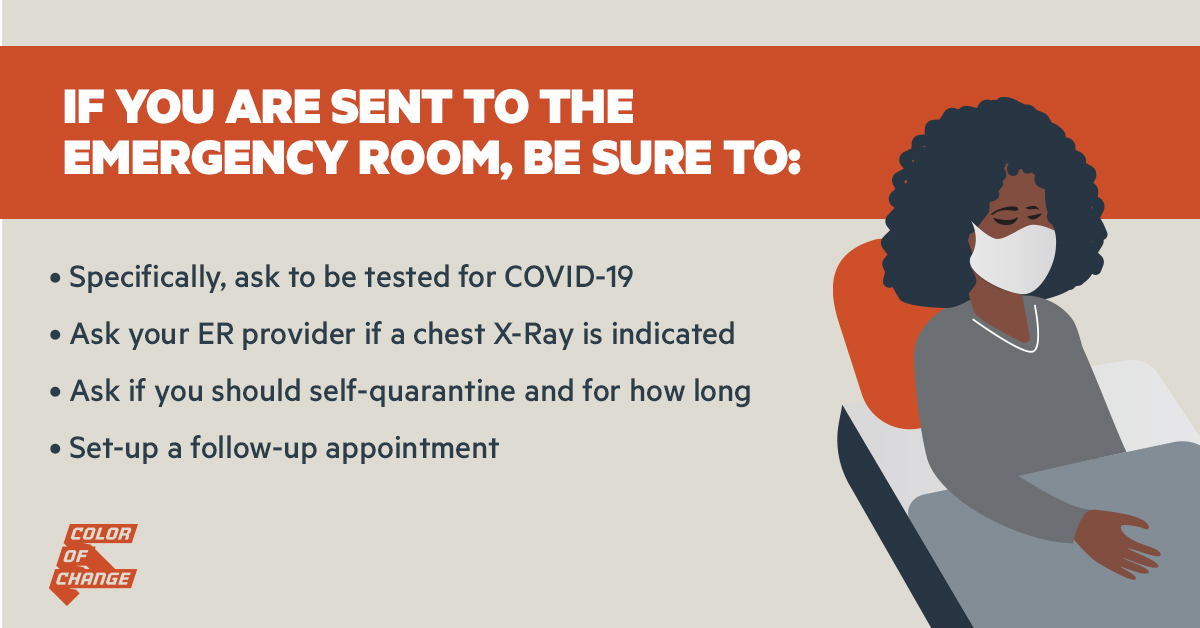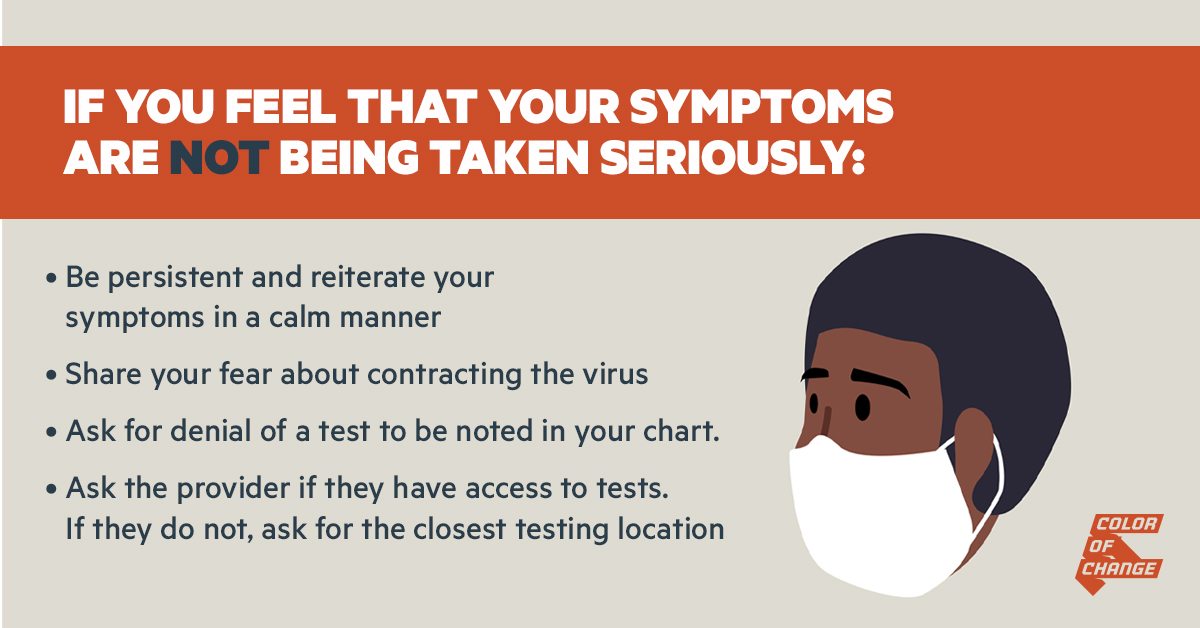The Black Patients' Guide to COVID-19
By Dr. Ruth Arumala, in partnership with Color Of Change
On constant loops on every news outlet and
social media feed is the looming risk of contracting the novel
“Coronavirus” and the developing life-threatening COVID-19 disease. With
no available vaccination and only experimental disease-fighting drugs
available, the highly contagious virus has produced an unprecedented
worldwide pandemic.
Unfortunately, in the United States there
are recent reports from various metropolitan areas such as New Orleans
and Chicago that the virus disproportionately results in severe disease
and mortality in Black people. In order to adequately combat this
disparity, Black Americans must be armed with accurate knowledge about
the viral illness and ways to navigate the current healthcare
environment.
MYTHS VS. FACTS
MYTH: The Coronavirus does not affect Black People.
FACT:
False. The Coronavirus is impacting Black Americans at higher rates and
resulting in more severe disease. In Louisiana for example, Black
Americans make up 32% of the population, yet comprise 70% of Coronavirus
deaths. In Chicago, Black people are dying at six times the rate that
of white people. Similar disparities are occurring all over the country.1
MYTH: The Coronavirus only affects older, sick individuals.
FACT: False.
There have been reports of infants as young as four months old with
severe symptoms of COVID-19. And one of the most heartbreaking U.S.
deaths occurred when five year old, Skylar Herbert passed away in
Detroit.2
MYTH: If I wear a mask, I do not have to practice social distancing.
FACT: False.
In order to adequately protect yourself and others from the
Coronavirus, you should continue to practice social distancing, while
also adhering to the new CDC recommendations to wear masks that cover
your mouth and nose.
BEST PRACTICES WHEN YOU SUSPECT YOU OR YOUR LOVED ONE HAS COVID-19:
The known symptoms of COVID-19 include
fever, chills, muscle aches, difficulty breathing, loss of taste and or
smell, nausea, vomiting, and a change in bowel movements--particularly
diarrhea. Although these can also be symptoms of the common cold,
influenza infection or seasonal allergies, we need to proceed with
caution during the peak or near peak of the coronavirus pandemic.
If you are experiencing these symptoms:
- Call your health provider.
- Be very specific about your symptoms.
- If there are any known contacts that have tested positive for the Coronavirus, immediately disclose that information to your provider.
- Include any underlying health conditions and what you do for a living--especially if you are public-facing, an essential worker, or have not been able to “shelter in place.”
- If you are experiencing persistent fevers and sustained shortness of breath, please present to the nearest emergency department. This indicates severe disease.

If you are sent to an emergency room or urgent care, be sure to include the following inquires about your care
- Specifically ask to be tested for COVID-19 and indicate any underlying health conditions.
- If you are given an alternative diagnosis, ask if you should self-quarantine, as well as the specific amount of time you should remain in self-quarantine.
- Ask your provider if you should replace personal hygiene items like toothbrushes or pillow cases.
- Ask your ER provider if a chest X-Ray is indicated.
- Set a follow-up appointment with your provider with a specific date which can be done via telemedicine. As a general rule, everyone seen in the hospital should follow up with a provider in 7-14 days.
- Do not leave the emergency room without having all of your questions answered and having a good sense of the severity of your symptoms.

If you feel that your symptoms are not being taken seriously:
- Be persistent. Reiterate your symptoms and any underlying health conditions in a calm manner.
- Share your fear, anxiety and mental anguish about contracting the virus and developing the disease.
- Ask for denial of a test to be noted in your chart.
- Ask the provider if they have access to tests. If they do not, ask for the closest testing location.

Although the novel coronavirus and COVID-19 pandemic can produce
significant anxiety and trepidation, there are ways to successfully
prevent and navigate this disease. Please do your part to stay at home,
wash your hands frequently, clean hard surfaces several times per day,
wear face coverings when in public, and maintain social distancing (>
6 feet from others) when in public.
Until justice is real,
Jade, Rashad, Arisha, Brandi, Johnny, Evan, Amanda, Eesha, Samantha,
Marcus, FolaSade, Jennette, Ciera and the rest of the Color Of Change
team
References
- “The coronavirus is affecting and killing black Americans at alarming rates,” Washington Post, 7 April 2020. https://act.colorofchange.org/go/246445?t=12&akid=42627%2E904270%2Ed-6fBQ
- “5-year-old daughter of Detroit first responders dies after being diagnosed with coronavirus,” CNN, 21 April 2020. https://act.colorofchange.org/go/246446?t=14&akid=42627%2E904270%2Ed-6fBQ





No comments:
Post a Comment